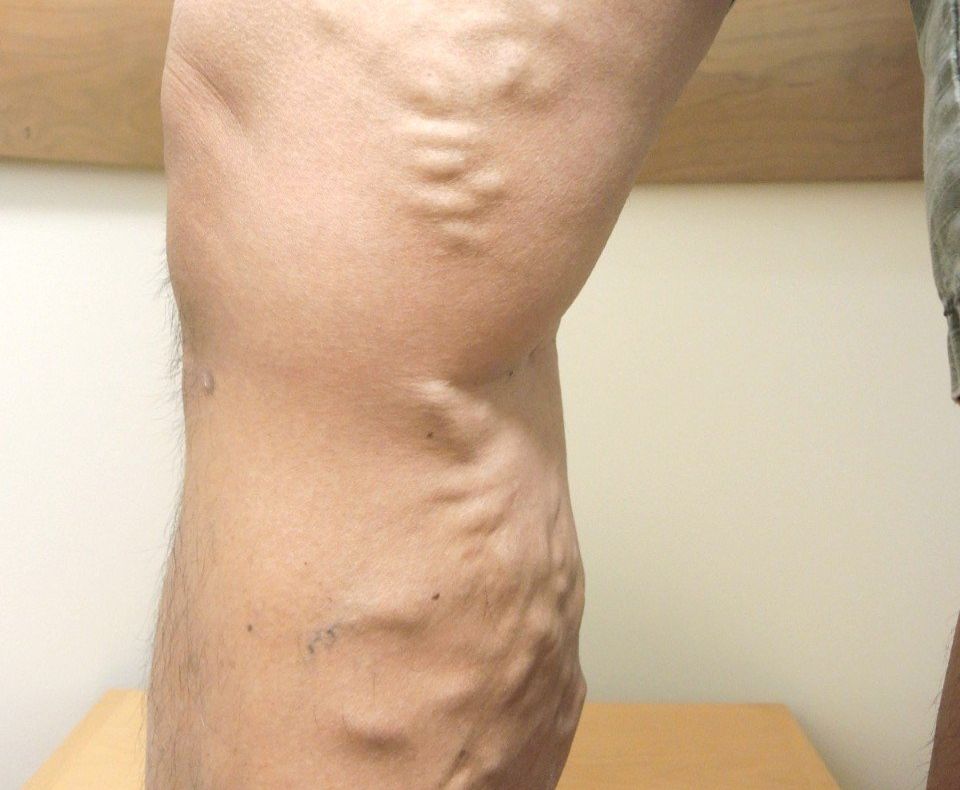Treatments for Swollen Legs
in Ormond Beach, FL
What causes your legs to swell?
Leg swelling, also known as edema, can have various causes. It occurs when fluid accumulates in the tissues of the legs, leading to swelling, discomfort, and sometimes pain.
It's important to note that leg swelling can sometimes be a symptom of a more serious underlying condition. If you're experiencing persistent or concerning leg swelling, it's advisable to consult a healthcare professional for an accurate diagnosis and appropriate treatment.
Common causes of leg swelling
Some common causes of leg swelling include:
- Prolonged standing or sitting: Remaining in one position for an extended period can cause fluid to accumulate in the legs, leading to swelling.
- Injury or trauma: A leg injury, such as a sprained ankle or fracture, can result in swelling as part of the body's inflammatory response.
- Venous insufficiency: This occurs when the veins in the legs have difficulty returning blood back to the heart, causing fluid to pool in the lower extremities. It is commonly associated with conditions like varicose veins or deep vein thrombosis (DVT).
- Lymphedema: This condition arises when the lymphatic system, responsible for draining excess fluid from tissues, is impaired. It can cause swelling in the legs, usually accompanied by a feeling of heaviness.
- Chronic venous insufficiency: This is a long-term condition where the veins in the legs fail to adequately pump blood back to the heart. It often results from damage to the valves within the veins, leading to fluid retention and leg swelling.
- Heart failure: When the heart is unable to pump blood effectively, fluid can accumulate in various parts of the body, including the legs. Heart failure-related leg swelling is typically accompanied by other symptoms like shortness of breath, fatigue, and coughing.
- Kidney disease: Impaired kidney function can lead to fluid retention and swelling, including in the legs. Other signs of kidney disease may include changes in urine output, high blood pressure, and fatigue.
- Medications: Certain medications, such as calcium channel blockers, steroids, and nonsteroidal anti-inflammatory drugs (NSAIDs), can cause leg swelling as a side effect.
- Infections: Infections in the leg, such as cellulitis, can cause localized swelling and redness.
How do varicose veins cause leg swelling?

Normally, the veins carry oxygen-depleted blood back to the heart for oxygenation. However, when the blood flow is compromised due to varicose veins, the delivery of nutrients and oxygen to the surrounding tissues can be compromised. This can cause the tissues to become more susceptible to fluid retention and swelling.
Other factors that contribute to swelling in legs associated with varicose veins include:
- Inflammation: The presence of varicose veins can trigger a chronic low-grade inflammation in the affected veins and surrounding tissues. Inflammatory mediators can contribute to fluid accumulation and swelling.
- Blood clot formation: Varicose veins are associated with a higher risk of blood clot formation. When a clot (thrombus) develops within a varicose vein, it can obstruct blood flow, increase pressure, and lead to swelling.
- Impaired lymphatic drainage: The lymphatic system plays a crucial role in fluid balance within the body. Varicose veins can impair lymphatic drainage, leading to fluid accumulation and swelling.
- Prolonged standing or sitting: Activities that involve prolonged periods of standing or sitting can exacerbate the swelling in legs associated with varicose veins. Gravity makes it more challenging for the blood to flow against the increased pressure, further contributing to fluid retention and swelling.
It is important to note that while swelling is a common symptom of varicose veins, not all cases of swelling in the legs are solely due to varicose veins. Other conditions such as deep vein thrombosis (DVT), heart failure, kidney disease, and certain medications can also cause leg swelling. Therefore, if you experience persistent or severe leg swelling, it is essential to consult a healthcare professional for an accurate diagnosis and appropriate treatment.
What are some treatments for leg swelling?
If leg swelling is specifically caused by varicose veins, there are several treatment options available to address both the underlying vein issues and the associated swelling. These treatments aim to improve circulation, reduce fluid retention, and alleviate discomfort. Here are some common treatments for leg swelling from varicose veins:
- Compression therapy: Compression stockings or socks are often recommended as a first-line treatment for leg swelling caused by varicose veins. These specially designed stockings apply graduated pressure, with the most pressure at the ankle and decreasing as they move up the leg. Compression stockings help improve blood flow, reduce pooling of blood, and minimize swelling.
- Lifestyle modifications: Certain lifestyle changes can help manage leg swelling associated with varicose veins. Elevating the legs above the heart level, especially while resting or sleeping, can assist in reducing swelling. Regular exercise, such as walking or swimming, promotes better circulation. Avoiding prolonged periods of standing or sitting can also be beneficial.
- Sclerotherapy: This minimally invasive procedure involves injecting a solution directly into the affected varicose veins. The solution causes the vein walls to collapse and stick together, ultimately closing off the vein. Over time, the treated veins are reabsorbed by the body, and blood flow is redirected to healthier veins. Sclerotherapy can help reduce swelling and improve the appearance of varicose veins.
- Endovenous laser treatment (EVLT) or radiofrequency ablation (RFA): These procedures use heat energy, delivered through a laser or radiofrequency catheter, to seal the affected varicose veins. The heat causes the vein to collapse and gradually disappear. By closing off the damaged vein, blood flow is redirected to healthier veins, reducing swelling and improving symptoms.
- Ambulatory phlebectomy: This surgical procedure involves removing smaller varicose veins through tiny incisions in the skin. It is typically performed under local anesthesia on an outpatient basis. Ambulatory phlebectomy can effectively treat larger varicose veins that contribute to leg swelling.
- Venous stenting or surgical ligation: In more severe cases, where varicose veins are causing significant swelling and complications, procedures like venous stenting (placement of a small tube-like device to open up a narrowed vein) or surgical ligation (tying off and removing the affected vein) may be considered.
It is crucial to consult with a qualified healthcare professional, such as a vascular specialist or phlebologist, to evaluate your specific condition and recommend the most appropriate treatment options for your leg swelling caused by varicose veins. They can assess the severity of your condition and guide you through the available treatment choices to achieve the best possible outcome
Do you suffer from leg swelling?
We help treat patients who have suffered both long a short term with swollen legs Ormond Beach, FL then look no further. We have been treating swollen legs for over 20 years. We offer nearly pain free treatments that will leave you with beautiful non-swollen, cramp free legs.


